The Pros and Cons of Five Project Delivery Methods
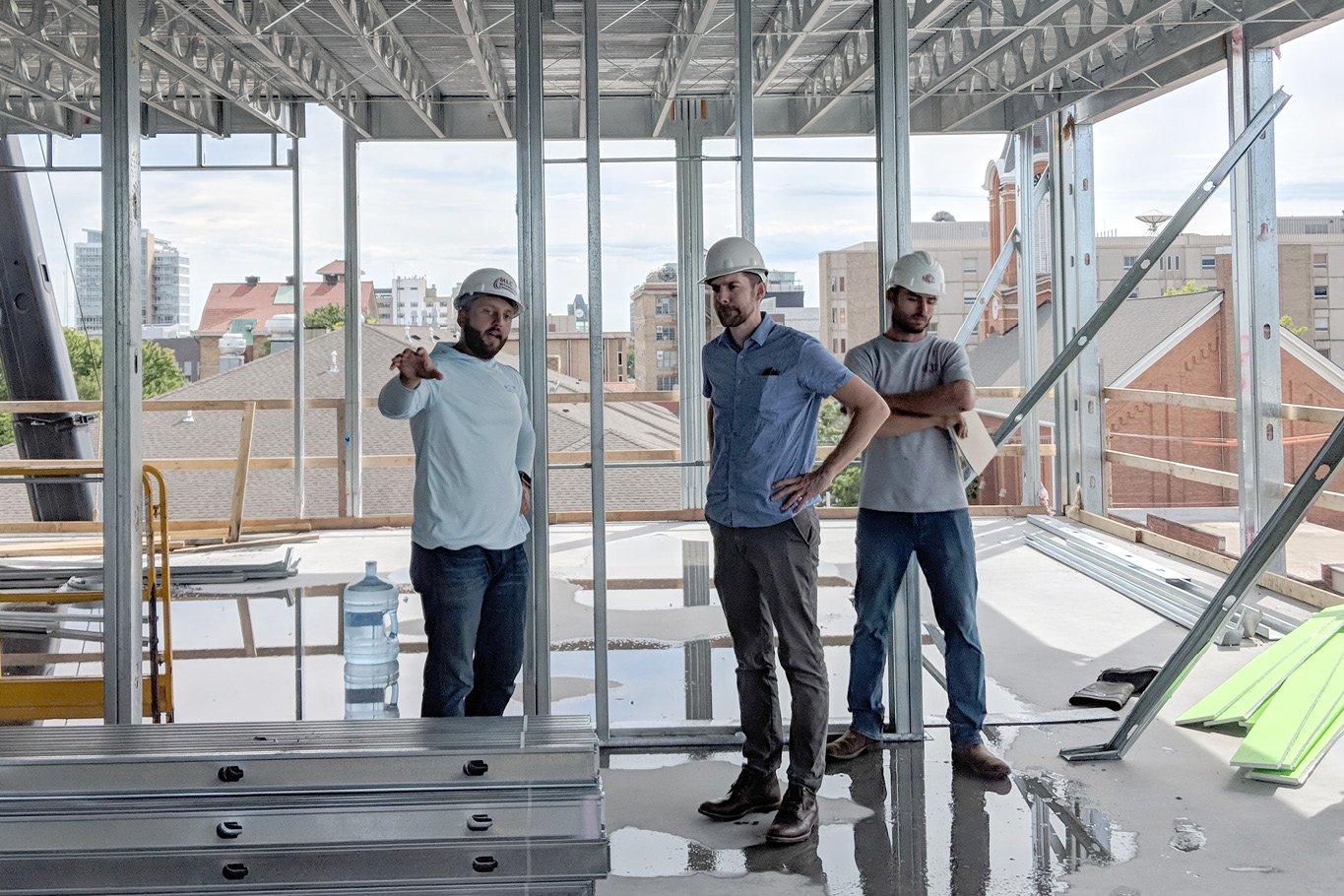
Choosing a project delivery method is an important step in the early design process. The delivery method determines how the architect and contractor execute your project and can significantly impact your budget and schedule. Before you decide on a method, be sure to weigh the pros and cons.
The five most common project delivery methods include:
- Design-bid-build
- Design-Build
- Design-negotiate-build
- Construction Manager At-Risk
- Construction Manager Agent
At Neumann Monson, we partner with clients who use each method. Each has its benefits and drawbacks, and the “ideal” method depends on your organization, project type, and scope. As you head into your building project, make sure you have a clear understanding of which method best fits your needs and goals. Here, we help set your project up for success with an unbiased outline of each method.
1. Design-Bid-Build
Design-bid-build is the most traditional project delivery method. With this method, the owner hires an architect who completes the design and, after bidding, hires a contractor who completes construction.
When the design phase is complete, contractors bid on the construction cost, a process that may occur publicly or with a pre-qualified group. After receiving bids, the architect will counsel the owner through the decision and the owner will select the contractor who offers the lowest responsive, responsible bid.
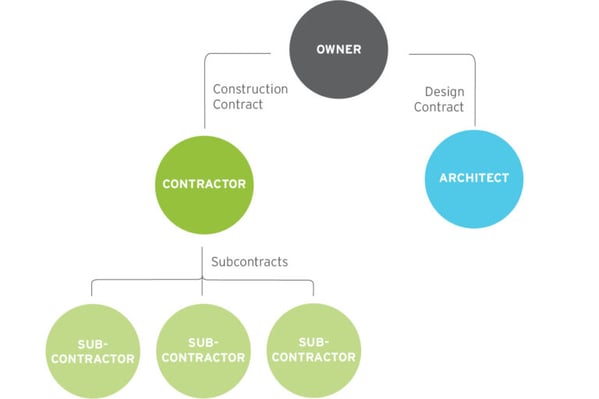
Pros and Cons
The design-bid-build method is known to reduce costs and ensure fairness for contractors. It is typically used for publicly funded projects like schools, universities, or government buildings. Recent Neumann Monson projects to utilize this method include Iowa City Public Works and the GuideLink Center. In theory, the method should lower construction costs by promoting competition between contractors.
Although the method helps reduce costs, it can be risky for owners. Some contractors may be tempted to offer the lowest possible bid and seek out low-cost subcontractors and materials, diminishing the quality of work. At the same time, there is no opportunity for architects and contractors to collaborate when developing the scope of the work.
As such, all drawings and specifications produced by architects and engineers need to be produced with a high-level of detail before the project goes out to bid. The more detailed the drawings and specifications, the more likely the completed project will reflect the design intent and align with the schedule and budget.
2. Design-Build
On a design-build project, architects work under a contractor who has a contractor with the owner. The contractor and architect collaborate from the project’s onset to develop the design and estimate costs.
When selecting a design-build team, owners can take one of two routes. The more traditional route involves a two-step process.
First, the owner identifies a short list of design-build teams through a Request for Qualifications. After, the owner issues a Request for Proposal, which includes technical specifications like a building program. Based on these specifications, the design-build teams prepare and submit a detailed proposal with a concept design and cost estimate.
The other route—called a Progressive Design-Build—involves a qualifications-based procurement process. After issuing a Request for Qualifications, the owner selects a design-build team based on the team’s knowledge and experience. The owner and the design-build team then collaborate on the project’s design and determine a budget.
This approach allows the owner to select a team before developing the building’s technical specifications. It also gives the owner more control and involvement in the process, creating a more collaborative relationship.
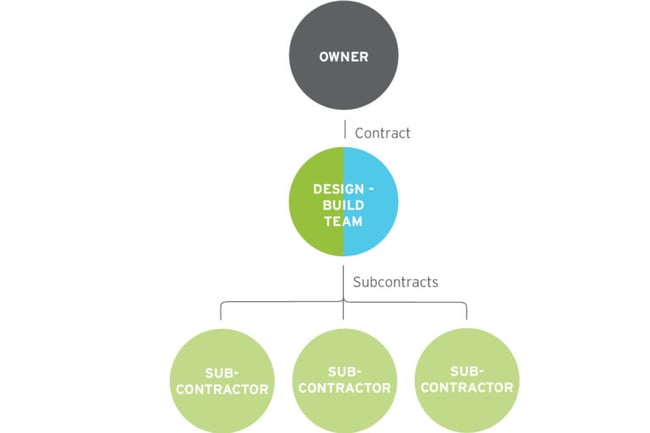
Pros and Cons
Design-builds are known to foster collaboration between architects and contractors and improve efficiency. Architects and contractors can work as a team to develop the most efficient solutions, compare alternates, and select materials while estimating costs and schedules. The method can also speed up design and construction by fast-tracking the bidding process.
Although this method was most common with smaller residential projects, it has gained popularity in the commercial realm. In the public realm, however, its use is limited. Some states, including Iowa, have laws that limit the use of the design-build model for public schools and universities.
3. Design-Negotiate-Bid
The design-negotiate-bid model resembles a hybrid of the design-bid-build and design-build models. Like a design-bid-build, the owner has separate contracts with the architect and contractor.
However, the owner selects the contractor privately, rather than through a public bidding process. As such, this approach can create a collaborative relationship between the architect and contractor, resembling a design-build method.
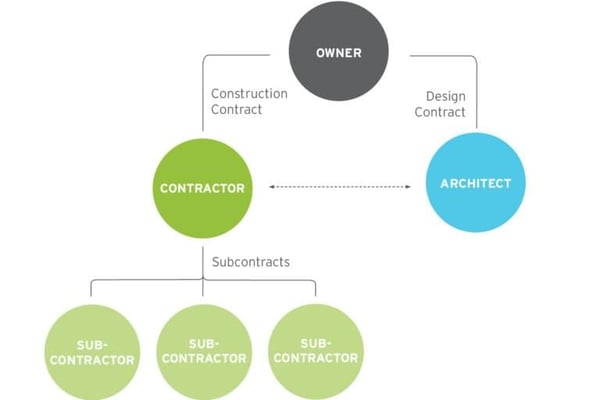
Pros and Cons
Like design-builds, architects and contractors can collaborate on material selection, pricing, and subcontractor selection, creating a highly efficient design and construction process. Often, we recommend this method for private projects.
For example, when the Stanley Center for Peace and Security decided to undertake the Living Building Challenge, we recommended they bring Graham Construction on board early in the design process. By taking a design-negotiate-build approach, we could improve communication and address the project’s unique requirements.
This method, however, eliminates direct competition between general contractors. Although contractors may compete early in the process, final pricing is provided by one contractor. Therefore, it’s important to partner with somebody you can trust.
Note: this method is not allowed for public projects, such as public schools and universities.
Your Guide to the Architectural Process
Prepare for your building project by downloading our complete guide to the architectural process.

4. Construction Manager-at-Risk
Construction Manager-at-Risk (CMAR) projects involve a Construction Manager (CM) overseeing a project from start to finish. Working on behalf of the owner, the CM holds contracts with the subcontractors. The architect will have a separate contract with the owner.
Before the design phase is complete, the CM estimates the construction cost and provides a Guaranteed Maximum Price (GMP) to the owner. If the project exceeds the GMP, the CM’s company will be financially responsible, putting the CM “at risk.”
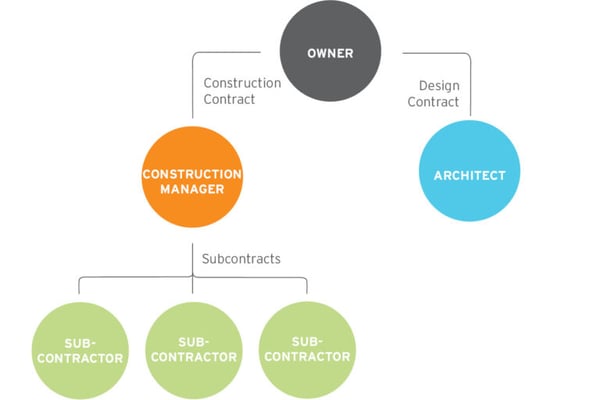
Pros and Cons
CMAR offers many benefits. First, the construction process is under one contract. The CM coordinates all subcontractor work, simplifying the process and reducing risk for the owner.
For large-scale projects, the CM may break the project into smaller scopes of work that are separately placed out to bid. Rather than completing all documents before construction begins (the case with design-bid-build projects), portions of construction can begin while the design team is completing documents for later stages. For example, site work may begin while other details are getting worked out.
Due to its efficiencies, CMAR is appropriate for large private projects. This method was used on the Kinnick Stadium North End Zone project, for example.
In some states, public entities may not be able to use the CMAR method. However, a recent change to Iowa's bidding laws allows public entities to use this delivery method with stipulations.
5. Construction Manager-Agent
Despite the name, the Construction Manager-Agent (CMA) method significantly differs from the CMAR method. Although a CM oversees the project and advises the owner, they do not hold direct contracts with each subcontractor.
Instead, the owner will hold each individual contract and the CM acts as a manager. At the same time, the CM does not provide a GMP, making it the owner’s responsibility to absorb any unforeseen costs.
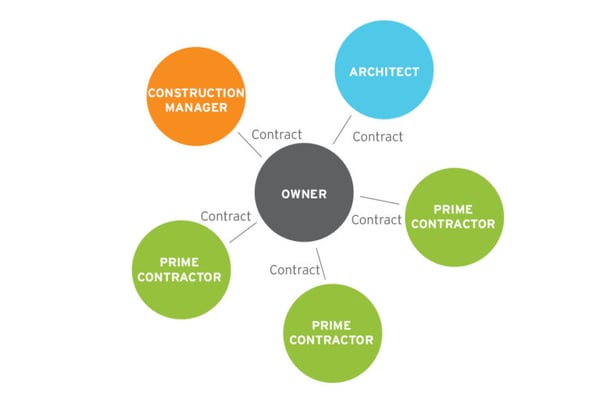
Pros and Cons
Like CMAR projects, the CM can act on behalf of the owner and make project-specific recommendations, simplifying the design process. For public projects where CMAR may not be allowed, CMA offers an alternative.
However, because the CM does not hold the contracts, the owner takes on more risk. If the project goes over budget, the owner will be financially responsible.
How to Choose a Project Delivery Method
When choosing a construction delivery method, carefully consider your project type, scope, and complexity. Typically, public projects are required to use a design-bid-build method. For private projects, we typically recommend the owner brings a contractor on-board.
It is also important to account for financial risk. Each approach presents varying degrees of risk, so carefully consider the experience of your organization and the amount of risk you are willing to undertake. If you are still unsure which method works best for your project, reach out to Neumann Monson. We are happy to learn about your project and help you determine which method fits your organization, schedule, and scope.
To learn what it’s like to work with us, check out our guide to the architectural process.